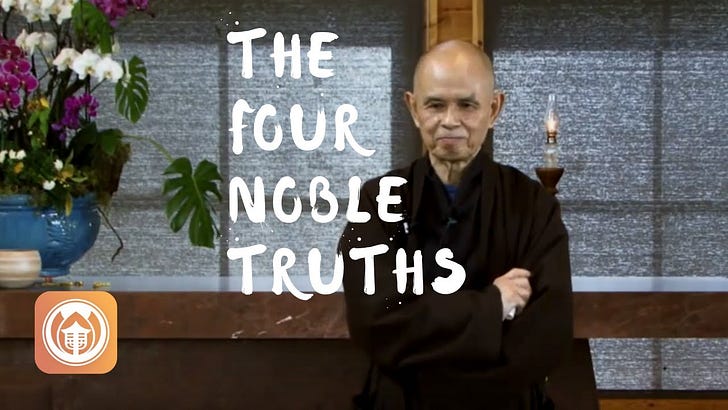Tibetan Buddhist Lamrim: Wishing Love
Wishing Love is cultivating the belief that we have the power to relieve the pain and suffering of another through the power of our own love and good intentions.
Anyone who endures a prolonged period of unhappiness and suffering laments their condition and desires a more peaceful mind. And since difficulties are part of the human condition, everyone wishes for a quieter and more peaceful mind from time to time.
People are often drawn to Buddhism because they observe the serenity and peace of mind displayed by its practitioners and desire that tranquility for themselves. People see through a practitioners example that peace of mind is possible, and through applying the Buddha’s teachings, they can obtain this state for themselves.
In the Four Noble Truths, the Buddha taught the nature of the mind, how we are responsible for creating our own suffering, and what we can do to overcome it.
The Buddha called this feature of the mind Samsara, and developing renunciation for Samsara is a key aspect of Tibetan Buddhist Lamrim teachings. In this context, renunciation means having a deep and genuine desire to break free from the cycle of birth and rebirth (Samsara) due to its inherent suffering and dissatisfaction.
Within the traditional Lamrim framework, this is the sole meditation in the Intermediate Scope. Many Buddhists view renunciation of samsara as the defining element of Buddhism, distinguishing it from other spiritual paths.
Once a practitioner develops an understanding of Samsara and fosters the desire to renounce Samsara, feelings of compassion naturally arise for those ignorant to these teachings who spend their lives trapped in an endless cycle of suffering with no idea how to overcome it.
In Tibetan Buddhist Lamrim teachings, the Wishing Love meditation seeks to increase the intensity of this natural compassionate response and expand its scope to encompass all living beings. It is a meditation that seeks to cultivate boundless love and goodwill.
Meditation on Wishing Love
Unconditional Well-Wishing: Wishing Love is characterized by the sincere and unconditional wish for the happiness and well-being of all sentient beings, without exceptions or discrimination. It isn’t limited to people.
Altruistic Intention: The practice of Wishing Love is rooted in a selfless and altruistic intention to genuinely wish for the welfare and happiness of others, ultimately surpassing one's own desires and interests.
Universal Love: The practice extends to all sentient beings, without exceptions. Practitioners aim to break down the barriers of self and other, recognizing the interconnectedness of all beings.
Compassion and Empathy: Wishing Love naturally leads to the development of compassion and empathy. Practitioners seek to understand and share in the experiences and feelings of others, especially in times of suffering.
Contemplation
Generating Loving-Kindness: Practitioners begin by cultivating a warm and loving attitude within themselves, often by visualizing a source of boundless love, such as a loving friend, family member, or a spiritual figure like a Buddha or Bodhisattva.
Expanding the Circle: Once a sense of loving-kindness is established, practitioners gradually expand the circle of recipients, starting with loved ones, then acquaintances, strangers, and even those they may have conflicts with or hold resentment against.
Specific Well-Wishing: During the meditation, specific phrases or intentions are repeated to express the well-wishing, such as "May all beings be happy. May all beings be free from suffering. May all beings live with ease."
Visualization: Some variations of Wishing Love involve visualizing the happiness and well-being of others in vivid detail, imagining them free from suffering, and experiencing immense joy and contentment.
Consider what you read in this post and focus on the following first-person narrative:
All beings wish to be happy, but they chase happiness in worldly concerns that only leads to continuous suffering. I will give them the supreme happiness of inner peace.
Through the power of my pure intention of wishing love, my body transforms into a wish-fulfilling jewel with the power to bring peace, love, and joy to every living being. My heart radiates with infinite rays of light pervading the entire universe with the bright light of love, reaching the minds and hearts of every living being in the universe, providing them with the ultimate happiness of inner peace.
I strongly believe that all beings feel my radiant love and experience this inner peace.
Object of Meditation
The belief that our radiant heart touches all beings and fills them with love and peace is the object of our meditation.
We should hold this feeling in our heart for as long as possible. When we arise from meditation, we should imagine our radiating heart shining on each person we meet.
Metta as a Daily Practice: Wishing Love is not limited to formal meditation sessions; it is integrated into daily life. Practitioners strive to maintain a loving and compassionate attitude in their interactions with others.
Path to Liberation: Wishing Love is considered a powerful practice that purifies the mind, reduces negative emotions, and contributes to one's spiritual growth and eventual liberation from suffering. It aligns with the Bodhisattva's aspiration to attain Buddhahood for the benefit of all sentient beings.
In summary, Tibetan Buddhist Lamrim teachings on Wishing Love emphasize the cultivation of boundless loving-kindness and well-wishing for all sentient beings. This practice helps practitioners develop compassion, empathy, and an altruistic attitude that extends to all without discrimination. It is seen as a transformative practice that leads to greater inner peace, harmonious relationships, and spiritual growth on the path to liberation and enlightenment.










That was really excellent. Thank you 🙏